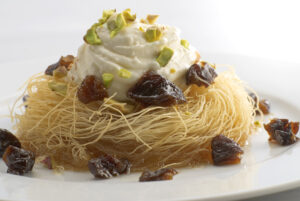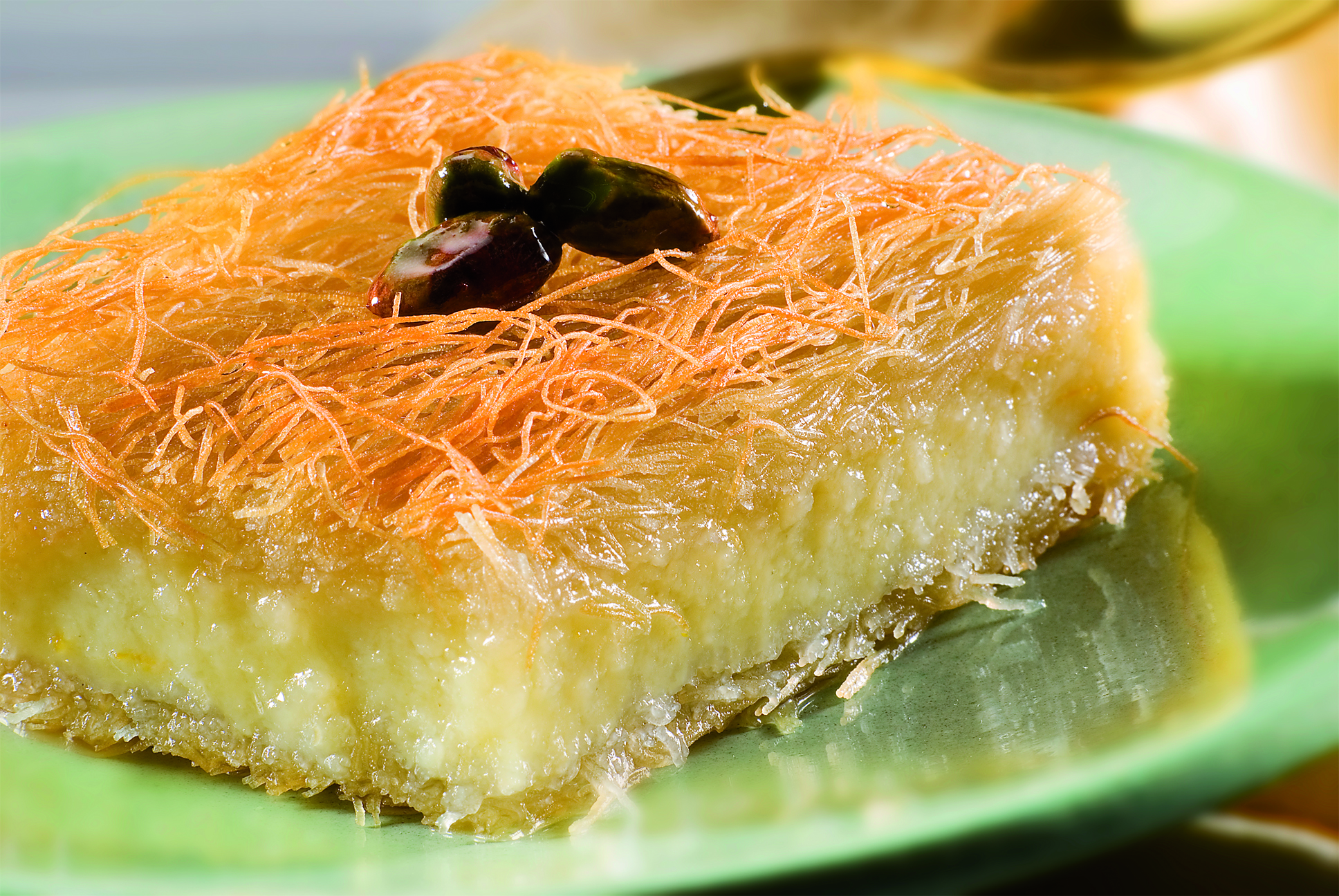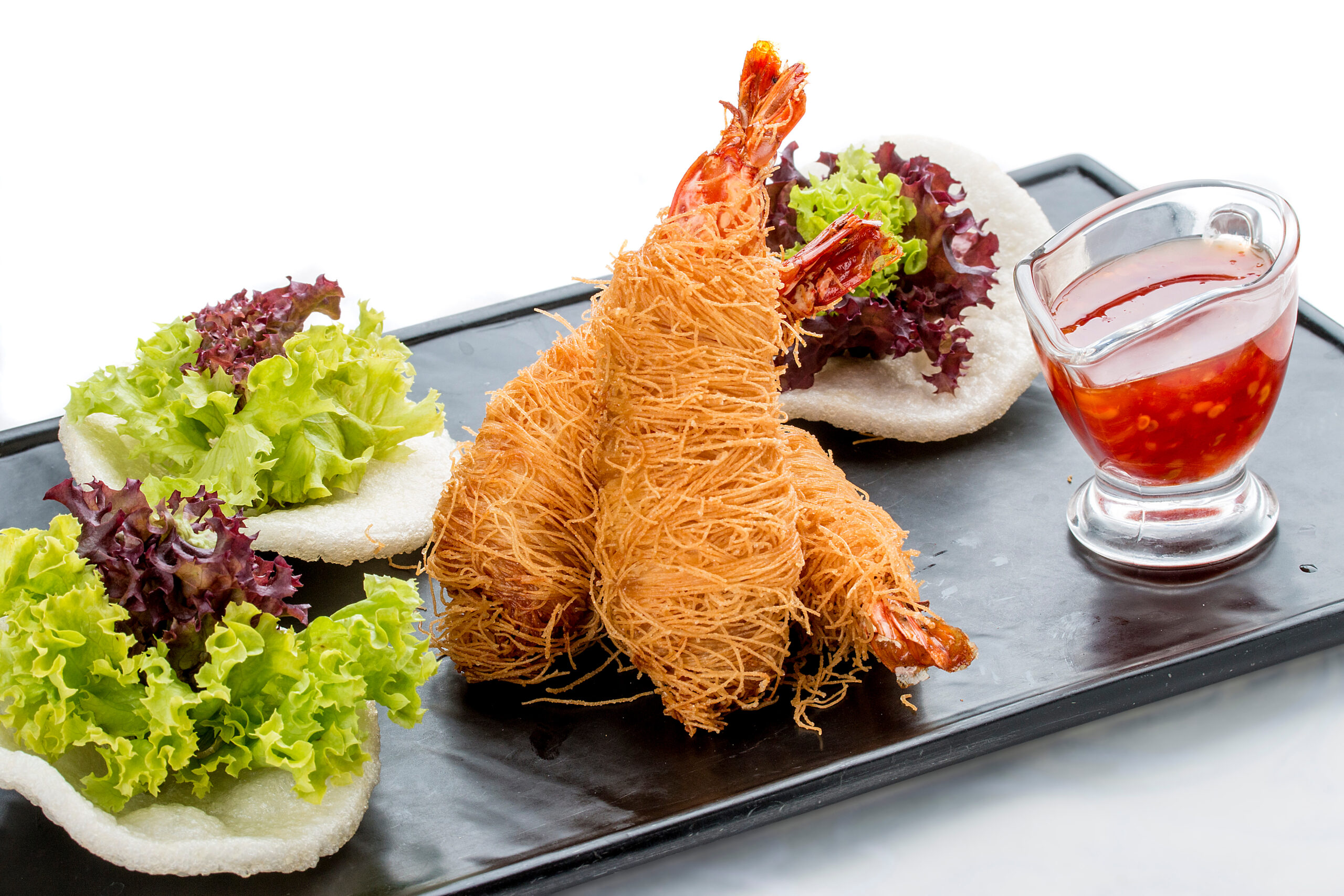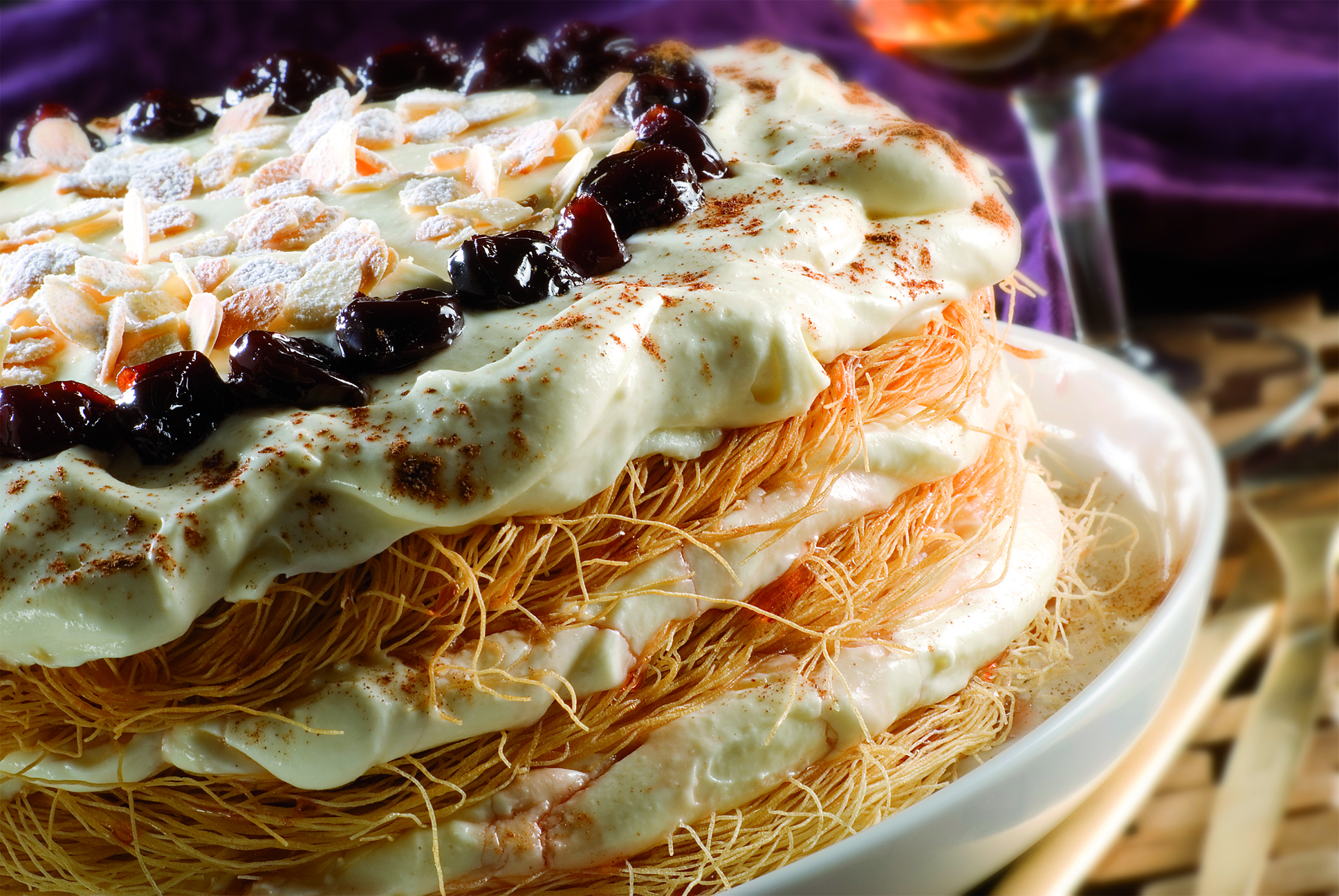Kataifi pasta is a product originating from Mediterranean cuisine, especially from Greece, Turkey and the Middle East. Its name comes from the Greek ‘Kataifi’, meaning ‘tousled’ or ‘tangled’, which perfectly describes its appearance. This pasta is characterised by the composition of thin strands of dough. Kataifi pasta is often used to wrap sweet or savoury fillings, such as nuts, cheese, meat, seafood or fruit, before baking.
What is Kataifi pasta?
Kataifi pasta is a dough made from wheat flour and water. This makes it a malleable ingredient that can be moulded into a kind of nest or sphere.

Characteristics of this pasta
Kataifi pasta has crossed the border of Greek and Middle Eastern cuisine and has become increasingly popular in international cuisine. This is due to its unique characteristics, such as:
- Crunchy texture. The thin strands of this dough turn golden brown and crispy, which adds an extra dimension to the dishes in which it is used.

- Varied filling. The versatile nature of this product allows for a wide range of sweet and savoury fillings. From nuts and honey to minced meat and cheese. The options are endless. This makes pasta an ideal ingredient for experimenting with new dishes in the kitchen.
- Attractive presentation. Kataifi pasta adds a visually appealing presentation to dishes. Its tangled, tousled appearance adds a unique decorative touch. This makes it ideal for dishes served on special occasions or to impress guests.
- Easy preparation. Although this dough may seem complicated to work with due to its tangled appearance, its preparation and handling is quite simple.

Types of kataifi paste
Kataifi pasta is a fairly specific product in its shape and composition, but may vary slightly depending on the manufacturer or the region where it is produced. It is therefore possible to find some variations such as:
- Kataifi paste. This is the most common, made from thin strands of wheat flour dough. It is used in both sweet and savoury dishes in Mediterranean cuisine.
- Variations in size. There are different types of Kataifi pasta with thicker or thinner strands, which may affect the final texture of the cooked dish. Generally, thinner strands are used for desserts and thicker ones for savoury dishes.
- Wholemeal Kataifi pasta. As with other wheat flour products, it is possible to find varieties that are made with whole wheat flour instead of refined wheat flour. These varieties offer a more robust taste and a higher amount of fibre.
Tips for preparing kataifi pasta
With the right recommendations, preparing recipes with kataifi pasta can be really easy. Here are some tips on how to do it:

- Defrost the pasta properly. If you have frozen Kataifi pasta, it is necessary to defrost it properly in the refrigerator before using it. This helps the dough strands to separate easily and can be handled easily.
- Handle it quickly. As this pasta tends to dry quickly once exposed to air, it is necessary to work it quickly. It is also advisable to cover it with a damp cloth when it is not being handled so that it does not dry out.
- Separate the pasta threads. It is necessary to gently separate the strands with your hands to facilitate handling and to obtain the desired shape.
- Use oil or butter. To prevent the dough strands from sticking together, it is very useful to spread a thin layer of oil or melted butter. This will help it to cook evenly and become crispy.
- Mould to taste. After the above steps, it is time to mould the Kataifi pasta to taste, such as into baskets, circles or rolls.
Bake at the right temperature. Bake the Kataifi pasta at a moderate temperature (approximately 180 – 200 °C) so that it cooks evenly and browns without burning. - Allow to cool before serving. Finally, after baking, the dough should be allowed to cool down so that it sets and becomes crispier.
Culinary uses of this pasta
Kataifi pasta is a versatile ingredient that can be used in a variety of sweet and savoury dishes. Here are some of the most common uses:
Sweet dishes
- Walnut Kataifi. This dish is a classic Greek dessert consisting of chopped walnuts wrapped in Kataifi pasta and then baked until golden brown and crisp, all soaked in a syrup flavoured with spices.
- Apple pie with Kataifi. In this dish, the pasta is used as a base or topping for an apple tart. The crunchy texture offered by the Kataifi dough complements the soft, sweet apple filling very well.
- Fruit baskets with Kataifi. The ease with which Kataifi pasta can be shaped gives the option of creating baskets. They can be filled with fresh fruit and a little whipped cream for a light and refreshing dessert.
Savoury dishes
- Seafood wraps with kataifi. Kataifi pasta can be used to wrap seafood such as shrimp or scallops. Once rolled, they are seasoned with herbs and spices, and then baked until crispy and golden brown.
- Meatloaf with Kataifi. This is a filling of minced meat seasoned with spices and herbs and wrapped in crispy baked Kataifi pasta.
- Feta cheese baskets with Kataifi. This dish is made from baskets of Kataifi pasta. They are filled with a mixture of crumbled feta cheese, tomato, cucumber, olives and fresh herbs. It is an excellent choice as an appetizer or starter.
Premium kataifi pasta
KANAKI has been the market leader in kataifi pasta in Greece for 40 years. It stands out for its high quality, high nutritional value and the great taste of its products. The love for tradition and gastronomy distinguish KANAKI. At Codina Foods, as gourmet distributors, we stand out for offering delicious products with healthy flavours and ingredients inspired by Greek and Mediterranean cuisine. Discover Kanaki’s complete range of delicious gourmet products.


